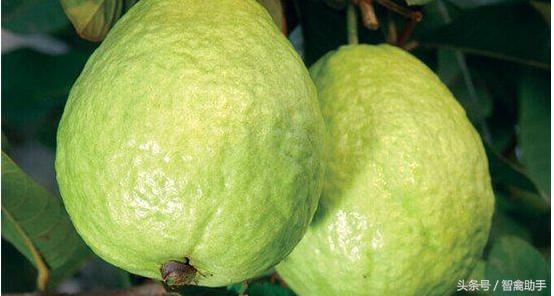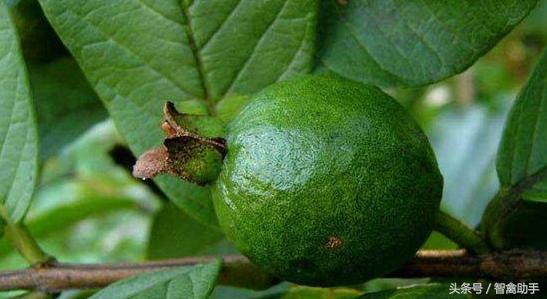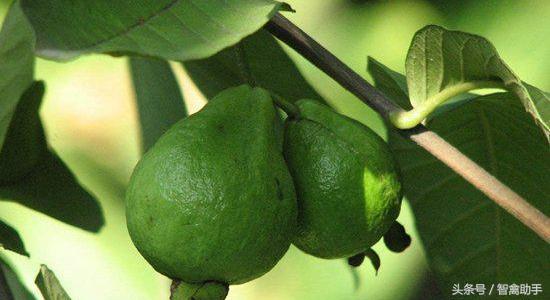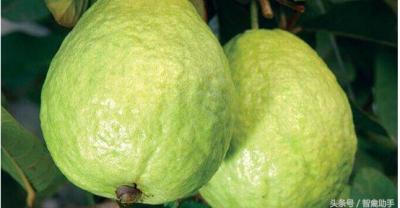How to raise seedlings when planting guava?
Guava is one of the common fruits in daily life, can be eaten fresh, can also be used for jam, jelly and other processed products, has a good planting value. At the same time, guava has the characteristics of rough and easy to grow, high and stable yield, strong adaptability and so on, which is attractive to many fruit growers. In order to succeed in guava, it is the key to do a good job in raising seedlings of guava. The main seedling raising methods of guava are seedling method, cutting method, bud grafting method and so on. Let's learn about it together.

Picture: guava
I. Real-life method
The speed of propagation of seedlings by this method is faster, and the seeds are collected from excellent mother plants, sowed or sowed immediately after seed collection, germinated after 4 weeks, and when the seedlings are 10 cm high, the selected seedlings are transplanted in a plastic nutrition bag with a diameter of about 12 cm and a height of about 20 cm, or directly in the bag, and can be planted after one year. If Thailand big fruit guava, autumn sowing, to the following spring transfer seedlings, April-May seedlings height of 40 cm can be planted. When sowing, the soil of the seedling bed must be fine, the surface of the border should be flat, and sufficient basic fertilizer should be applied. The washed and sun-dried seeds are evenly sown on the border surface, compacted with boards, and then sprinkled with a thin layer of burning soil or sifted garbage mud, which can also be covered with fine topsoil, with a thickness of about 0.3 cm, to cover the seeds. Sprinkle the water in a bucket after sowing, and then sprinkle it once a day to keep the soil moist. In order to improve the germination rate, soak the seeds in hydrochloric acid for 12 hours or soak in hydrochloric acid for 3 seconds before sowing, the germination rate can reach 90%. Seedling colonization usually begins to bear fruit in the third year. The plant variability of the offspring of seed reproduction is large, the tree potential is high, and it is inconvenient to manage.
2. Cutting method
From February to April every year, branches with a stem diameter of 1.2mi 1.5 cm were selected from fine plants, each segment was 15 cm long, the base was cut into a smooth triangular shape, the tip of the head was pointed, and it was inserted directly into the soil, with a depth of 1/2, compacted soil, covered with water, and kept moist, and the value could be provided before and after the Qingming Festival in the second year. The rooting rate is lower than that of round-branch seedlings, the development of root system is often uneven, and the development of tree crown is not regular. The survival rate of cutting propagation is up to 60%.

Picture: guava
Third, circle the branch
1.5 cm in diameter and 2-3 years old branches were selected before and after the Qingming Festival, and the branches were peeled in a ring shape about 40 ~ 60 cm from the end of the branch, about 1.5 ~ 2.0 cm wide, and then wrapped in mud strips infiltrated with straw, and the new roots were exposed for 50 ~ 60 days, and the mother plant could be cut off. Can also use moss or coconut bran, etc., externally wrapped with plastic film. After about 3 mi for 5 weeks, a large number of new roots occurred and were cut off from the mother plant. After the seedlings were separated from the mother plant, they were pseudo-planted in the nursery for one year. Or directly planted in the orchard from July to August of that year. Fake planting should be properly shaded for a period of time and maintain a certain degree of humidity. The survival rate of twigs can reach 90%. The result was 1 / 2 years earlier than that of cuttage.
IV. Contact method (leaning connection method)
The rootstock is real guava. After sowing, it will take about 1 year for rootstock to be grafted. Only about 3 months after survival can the mother branch be amputated.
5. Budding method
The grafting survival of guava is very little, among which bud grafting is more reliable. The rootstock used is exuberant with a diameter of 2mi 3cm, so it is appropriate to use patch budding method. The grafting method can use all kinds of rootstocks to enhance the adaptability to the soil and advance the fruiting period.

Picture: guava
VI. Planting
Before planting, dig a planting hole of 70ml / 80cm square according to the density, apply 50 kg of rotten animal manure or compost (or 50-70kg of green material) to each hole, 0.5m / kg calcium superphosphate, and then return to the soil 20m / 30cm higher than the ground. Prepare the planting hole 3 months before planting. In Hainan, if watering is convenient, it can be planted every year. In arid areas, if there is no watering jin, it is better to plant from the light rain in late spring and early summer to the end of typhoon. The row spacing is generally 4 × 6 meters, but the early-maturing species planted in mountainous areas can be slightly denser, and the middle-maturing species or fertile land can be appropriately relaxed. According to the requirements of increasing production, 4 × 4 meters can be tried out.
[conclusion] to do a good job in raising seedlings of guava is the basis for the successful cultivation of guava. The above introduces the method of raising seedlings of guava, hoping to help you!
- Prev

Dental implants, those things.
These years have been working in the field, less and less time to go home, more than a year did not go home a few days ago I took time to go home. At the end of the day, I'm not sure.
- Next

Conservation and Management of Lily Planting
I. Temperature management Lily planting in the first two weeks, the temperature should be controlled at 4-13 degrees Celsius, after the temperature can be gradually increased to promote the growth of stem roots....
Related
- Fuxing push coffee new agricultural production and marketing class: lack of small-scale processing plants
- Jujube rice field leisure farm deep ploughing Yilan for five years to create a space for organic food and play
- Nongyu Farm-A trial of organic papaya for brave women with advanced technology
- Four points for attention in the prevention and control of diseases and insect pests of edible fungi
- How to add nutrient solution to Edible Fungi
- Is there any good way to control edible fungus mites?
- Open Inoculation Technology of Edible Fungi
- Is there any clever way to use fertilizer for edible fungus in winter?
- What agents are used to kill the pathogens of edible fungi in the mushroom shed?
- Rapid drying of Edible Fungi

